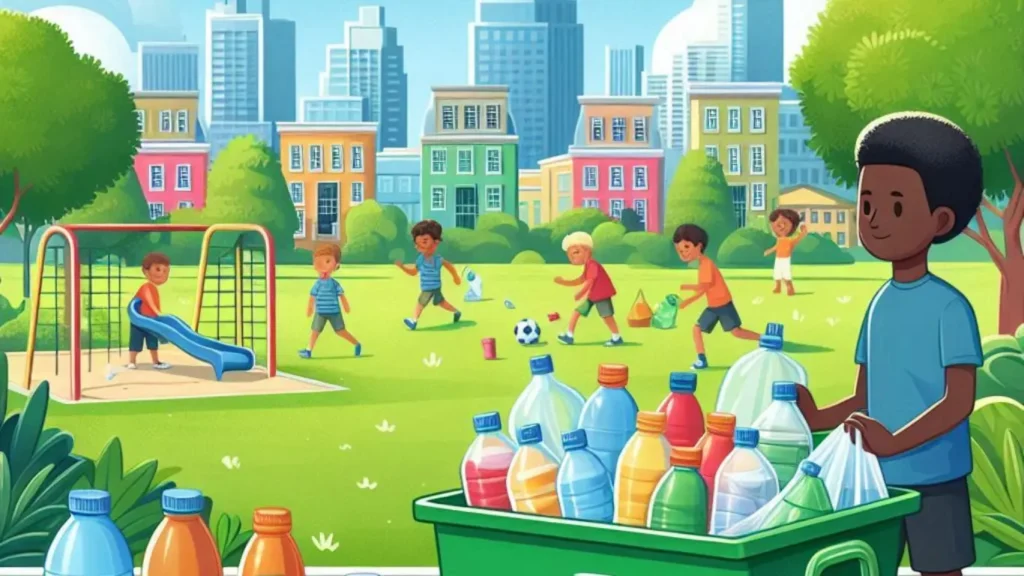In an era where plastic pollution has become one of the most pressing environmental issues, innovative solutions are emerging to tackle this challenge. A groundbreaking new process that vaporizes plastic bags and bottles is set to revolutionize waste management and sustainability practices. This advanced technology offers a promising path to reducing plastic waste and mitigating its environmental impact. In this article, we’ll delve into the details of this new process, its benefits, and its potential implications for the future of waste management.
Table of Contents
Understanding the New Vaporization Process
The new vaporization process represents a significant leap forward in waste management technology. Unlike traditional recycling methods, which often involve mechanical or chemical breakdowns of plastics, this innovative approach focuses on converting plastic waste into useful by-products through vaporization.
- How It Works
- Pre-Treatment: Plastic waste, including bags and bottles, is first pre-treated to remove contaminants and non-plastic materials.
- Vaporization: The treated plastic is then subjected to high temperatures in a controlled environment. This process effectively breaks down the plastic into its gaseous components.
- Condensation: The gases produced during vaporization are then cooled and condensed into liquid forms, which can be further processed into fuels or other valuable chemicals.
- By-Products: The remaining by-products are typically solid residues that can be processed or disposed of in an environmentally friendly manner.
- Key Technologies Used
- Thermal Depolymerization: This technique involves heating plastic waste to high temperatures to break down its chemical bonds, converting it into simpler molecules.
- Catalytic Conversion: Catalysts are used to accelerate the chemical reactions during vaporization, improving efficiency and yield.

Benefits of the Vaporization Process
The new vaporization process offers several advantages over traditional plastic recycling and waste management methods:
- Reduces Landfill Waste
- By converting plastic waste into gaseous and liquid forms, this process significantly reduces the volume of plastic that ends up in landfills, helping to alleviate space constraints and environmental concerns associated with landfills.
- Minimizes Environmental Impact
- Vaporization reduces the need for mechanical sorting and chemical treatment, which often involve harmful processes and by-products. The cleaner and more controlled nature of vaporization minimizes the environmental footprint of plastic waste management.
- Produces Valuable By-Products
- The liquid and gaseous by-products from the vaporization process can be repurposed as fuels or raw materials for other industrial processes. This not only adds economic value but also supports a circular economy.
- Energy Efficiency
- Modern vaporization technologies are designed to be energy-efficient, reducing the overall energy consumption compared to traditional recycling methods. Advances in technology have made it possible to achieve high conversion rates with lower energy inputs.
Challenges and Considerations
While the vaporization process holds great promise, there are some challenges and considerations to address:
- Cost of Implementation
- The initial setup and operational costs for vaporization technology can be high. However, as the technology matures and scales up, these costs are expected to decrease.
- Technical Complexity
- The vaporization process requires advanced technology and precise control to ensure optimal performance and safety. Ongoing research and development are essential to refine these technologies and make them more accessible.
- Regulatory and Environmental Compliance
- Ensuring that the vaporization process meets environmental regulations and standards is crucial. Continuous monitoring and compliance are necessary to prevent any adverse environmental impacts.
The Future of Plastic Waste Management
The vaporization process represents a significant advancement in the quest for sustainable plastic waste management. As technology continues to evolve, it is expected to become a key component of integrated waste management systems, complementing traditional recycling methods and other waste reduction strategies.
- Integration with Existing Systems
- Vaporization can be integrated with existing waste management infrastructure to enhance overall efficiency and effectiveness. Combining vaporization with other recycling methods can create a more comprehensive approach to managing plastic waste.
- Global Adoption
- As more regions and countries recognize the benefits of vaporization technology, it is likely to see wider adoption globally. This can lead to significant reductions in plastic waste and support efforts to combat global plastic pollution.
- Innovative Applications
- The by-products of the vaporization process can be used in innovative ways, such as producing alternative fuels, developing new materials, or creating high-value chemicals. This opens up new possibilities for economic and environmental benefits.
Conclusion
The new process that vaporizes plastic bags and bottles represents a transformative step in managing plastic waste and advancing sustainability. By converting plastic waste into valuable by-products and reducing landfill contributions, this technology addresses critical environmental challenges and paves the way for a cleaner, more sustainable future. As the technology continues to evolve and gain traction, it has the potential to revolutionize waste management practices and contribute to a healthier planet.
